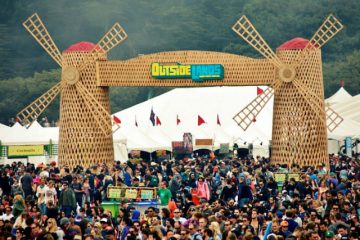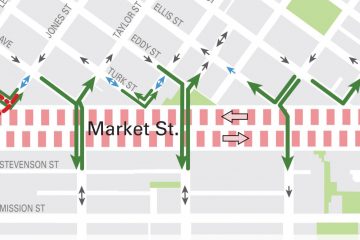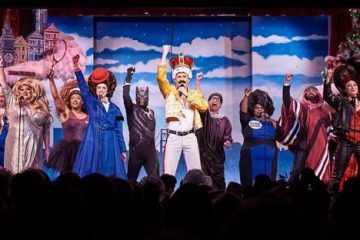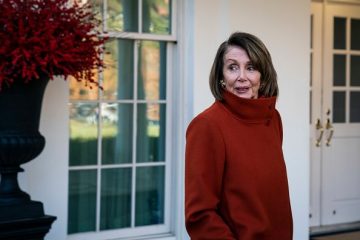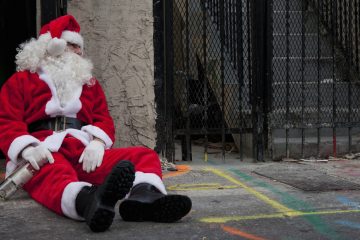Weekend Rallies Raise Questions About Police Allegiance as Charlottesville Anniversary Nears
It was a busy weekend on the West Coast with rallies and counter-protests dominating local new and local resources in Portland, Oregon and Berkeley, California. Police are drawing scrutiny for their actions in both events, with some accusing authorities of targeting those on the left and protecting right-wing attendees. The perception of bias has people nervous as a second “Unite the Right” rally nears on Aug. 11 in Washington, D.C., almost exactly one year after the tragedy in Charlottesville, Virginia.
Some Background
Both events have been planned for some time. Patriot Prayer and Proud Boys were highlighted as key organizers and participants, but some who attended Berkeley’s rally credited Amber Cummings as an organizer. The two-day, multi-state rally fest focused on cities where right-wing groups have previously been met with substantial resistance from community members and anti-fascists, and where altercations turned bloody on several occasions over the past two years. The most recent example was on June 30 in Portland, where the event was declared a riot and several people were injured, much like what happened in Berkeley on April 15, 2017.

Portland, Oregon rally/protest turned violent and declared a riot on June 30, 2018. Photo courtesy of John Rudoff/Sipa-USA
After the devastating murder of Nia Wilson on July 23 and Oakland’s response, members of the Proud Boys organization denounced participation in Sunday’s Berkeley event, claiming the media was spinning it into a rally “against Nia Wilson.” Patriot Prayer founder Joey Gibson soon followed suit over concern that a known Klansman and leader of the American Guard group had been invited to join in Berkeley, as the Williamette Week reported. The public pull-back by the Proud Boys and Patriot Prayer greatly reduced the size of Sunday’s rally in California.
Portland
The event in Portland Saturday was definitely more violent than what was seen in the East Bay Sunday. Reports from Portland vary, with some outlets attributing the escalation to “anti-fascists” and some claiming police became aggressive without provocation. At least one counter-protester was sent to the hospital with a head injury after a canister shot by police penetrated his helmet, according to Oregon Live.
From video footage and first-hand accounts, we know things were thrown, but not who threw them first. Who was in the wrong depends largely on who you’re talking to.

Helmet of protester in Portland, Oregon hit with canister shot by police August 4, 2018. Photo courtesy of @wherestherevolt/Twitter
Berkeley
Hundreds of counter-protesters showed up in downtown Berkeley Sunday in an effort to shut down a fairly low-attended “No to Marxism” rally held by conservative and alt-right groups in Martin Luther King, Jr. Civic Center Park. However, the groups were largely kept at a distance from each other with heavy police presence and barricaded streets surrounding the area. The rally inside the park was protected from large-scale opposition, with the small exception of a group from Revolution Books and a few others that evaded barricades early in the day. All others marched and detoured down side streets but were met with SWAT-ready officers at every turn.
Berkeley rally, cops and counter protesters inching in on each other @BrokeAssStuart pic.twitter.com/MjR253XIKa
— Nik Wojcik (@nik_shine) August 5, 2018
Some rally attendees broke off and pushed into crowds of counter-protesters, seemingly to incite aggression with signs and provoking language. One helmeted man holding a microphone and camera with an “Info Wars” sticker stood by in an effort to capture actions by the left that could be used to feed their rhetoric. They were met with spit and the occasional shove, but nothing seriously violent.
Small skirmishes were started by people on both sides of the line – Xochitl Johnson of Refuse Fascism was pushed by rally attendees at the edge of the park while playing a drum with other members of the organization. A protest attendee, who declined to give his name, there with his dog said he came to see what was going on but was still trying to figure it all out. “All I know is you’ve got Communists against Trump supporters, Trump supporters against colored people…I don’t know,” the man said. “All I know is I don’t like Trump, but I don’t like the sides everybody is trying to create.”
Jeffrey, who attended the rally in Berkeley Sunday, said he was also in Portland June 30 and “kicked the hell out of some commies” but claimed he was attacked first. His mission in Berkeley was to “document” the events and apparently to pursue several debates touching on the First and Second amendments.
“Fuck Nazis,” Jeffrey said. “Fuck (Supremacists), fuck ‘em all. Right? We can agree on that. But why would you want to give a Nazi your guns?”

Anti-Nazi signs carried during counter protest in Berkeley, Calif. August 5, 2018. Photo by Nik Wojcik
In the war of framing at the surface of these standoffs, words such as Nazi and fascist are tossed from one side to the other like a toxic game of Hot Potato. It’s difficult to definitively discern what each side, and each subgroup within each side, stands for without an elaborate org chart, and even more challenging at times to identify the beliefs and intentions they don’t publicize.
Reiko Redmonde of Revolution Books in Berkeley is disappointed that media didn’t address the context of the far-right message, didn’t “talk about what they were trying to do with this rally.” Given that her bookstore has come under violent attack in connection with rallies past, Redmonde has personally seen a bitter reality beneath the public relations face of some of these groups. She sees the police and their actions as a militarized extension of a fascist regime under Trump and Pence.
“What (the police) did on Sunday was they completely prevented the larger march from coming into the park,” Redmonde said. “They facilitated the fascist rally.” It was in the park where she and a handful of others stood in defiance with a Revolution Books banner and selection of Marxist writings and where she claims the police “brutally” damaged their display during a nearby scuffle.
In Berkeley, 20 arrests were made and 21 city vehicles (and a few garbage cans) were damaged, according to a Berkeley Police Department statement. Also included in that press release and repeated on social medial were the names, photos and cities of residence for 16 of the arrestees. At least three counter-protester arrests were were made late in the day, after the bulk of rally attendees had already left, leaving little chance of an altercation. Police primarily cited individuals with “possession of a banned weapon,” and provided pictures of confiscated items such as hammers, rocks, metal poles and one thick Sharpie. Police have been under fire since release of the names and pictures, a practice they have resorted to in the past, because doing so can lead to doxxing and threats of violence by far-right extremists. Several arrests BPD publicized in similar situations have failed to result in lasting charges.
Redmonde said one of her friends was arrested for wearing a mask, which raised some questions. Berkeley City Council met with BPD last week to establish rules for Sunday’s event and masks were specifically discussed and debated – it was finally decided that masks would not be considered a prohibited item. As later explained by BPD Public Information Officer Byron White, although masks were not prohibited in accordance with the City Streets Ordinance, once someone is arrested for possession of a banned weapon, they can also be charged separately for wearing a mask while committing a crime. White told us in a phone interview Tuesday that one such arrest was made on Sunday and of the remaining, one was for battery, one for vandalism and the others solely for possession of a “banned weapon,” which can be interpreted subjectively and broadly. White could not confirm how many people were still being held or who will actually face charges.
History in the Making
The hard line in the sand and the more organized factions of each side soak up most media attention during coverage of events like these, but it should be noted that protesters come in all ages, shapes, races and sexual orientations and most remain peaceful but vigilant on the outskirts, away from any violent fray. Perhaps the most powerful aspect of these stories is the collective sentiment that draws support from average community members: the elderly in sun hats with signs supporting marginalized groups in society, the families with small children fighting for the rights of women, the scores of people demanding better treatment of our immigrant populations, and yes, there were even a few Juggalos.
These rallies and protests are often overshadowed by extremes and almost always become semantically confusing, but the basic context is simple. There are some groups espousing ideas contrary to the general public’s moral compass and they go to extremes to have their ideas heard in public forums. Other people are threatened by the groups’ presence in their cities and gather to resist. These standoffs sometimes bend beyond contention into violence, but most people stand their ground without throwing fists. Platforms for each side can be confusing, but it is typically easy to identify which side of the line people stand on.
As the Charlottesville anniversary approaches, the question now is which side of the line, and which side of history, police will choose to stand on.



